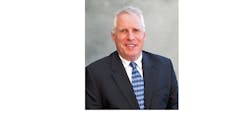I have seen first-hand the value a good Activity Based Costing (ABC) model can bring to a distributor. A well-designed model can provide powerful insight on profitability drivers and provide useful inputs when making strategic decisions on sales resource allocations and pricing.
However, I have long been skeptical of tying sales incentives to the “net profit” these models derive. In fact, tying sales incentives to net profit based on an ABC model can have unintended consequences for distributors.
All of us are familiar with net profit when it comes to a standard income statement. It’s the bottom line. It’s what’s left of the money the company takes in (revenue) after it pays its suppliers and its other expenses. Net profit as it relates to sales compensation is somewhat different. It relies on ABC-driven allocations to calculate a net profit at a transaction, customer, or, in this case, a sales territory level.
I am skeptical because net profit, when it’s calculated outside of an enterprise level, treats every expense as if it were variable. Each order has multiple costs applied to it. Some of these costs are direct — such as the cost of an inside salesperson receiving and entering the order, or the cost of fuel, depreciation and driver labor for making a delivery. However, most of the costs allocated to each transaction are not direct, but indirect costs.
The most typical approach to calculating an ABC-driven net profit is to allocate 100% of the company’s costs using cost drivers. Some of these allocations are relatively straightforward, such as using deliveries to allocate delivery expense or warehouse orders to allocate warehouse expense. However, for staff functions such as IT, HR, finance and so on, allocations are often simply made as a percentage of sales. If HR expense equates to 1% of a company’s sales, then everything sold receives a charge equal to 1% of its sale price for HR expense. And here is where the problem begins.
Many costs incurred by distribution businesses are not variable. Selling one additional widget no more increases HR cost than selling one less widget decreases it. Of course, all costs are variable in the long run. But many costs are not incurred in increments of $1 or $10 but instead in increments of $40,000 or $80,000 because they correspond to salaried employees. It’s not unusual for between two-thirds and three-fourths of a distributor’s operating expenses to be people, many of whom are salaried.
Over my 20 years of working with distributors, I have seen the output of many ABC models. Without exception there are transactions, customers and even product lines reported as unprofitable (expenses exceeding gross profit). This is the core of the issue. If salespeople are paid based on net profit, the easiest way for them to increase net profit (and thus, grow their income) is to eliminate these unprofitable sales. Yes, reduce sales to increase profit.
Reducing sales to increase profit is a dicey strategy. Not a bad strategy, but a strategy that requires real expenses (not allocated expenses) to decline at a rate equal to or greater than the rate at which gross profit dollars are declining. After all, the unprofitable sale probably isn’t truly having any impact on the company’s IT cost or how much the CFO is paid, it’s simply absorbing an allocated charge. Here’s how the strategy works:
1.) Sales rep abandons unprofitable business, causing sales to decline.
2.) ABC territory net profit increases because allocated costs exceed gross profit for these sales, helping the sales rep make more money.
3.) Actual company costs remain roughly the same, and company has fewer gross profit dollars to pay its bills.
4.) Net profit at the company level declines. This, in a nutshell, is the reason I haven’t been much of a fan of paying sales reps on net profit.
A better approach. That said, the reasons distributors are looking at net profit as a potential basis for paying salespeople are legitimate. Voodoo accounting or not, we all know that a $5 order at 30% gross profit delivered to a customer in the next county is a money loser. This deficit is further amplified when a salesperson is also paid a commission or gets credit toward his gross profit bonus goal.
The goal of better aligning sales rep pay with the economics of the business is an admirable one. The good news is that ways exist to incorporate key profit drivers into a sales compensation program without taking the full territory net profit plunge. One approach is to eliminate the allocation of costs truly unrelated to transactional volume and focus in on costs that could be justifiably incurred as a result of the transaction. Delivery, warehousing labor and order processing costs would fit this description. It’s true that warehouse labor and order processing costs are people costs that come in increments of tens of thousands and not tens of dollars, but staffing levels for inside sales and warehouse are much more elastic than IT system administrator or CEO.
A rudimentary analysis can quickly lead to a cost per order for warehouse business and direct business. Applying this cost to every order to arrive at a commissionable gross profit or incorporating a minimum order for commission can better align sales rep rewards with company profitability. If done properly, this approach can nearly eliminate the “shrink to profitability” dynamic because actual costs would be avoided if the orders were not taken. Furthermore, if a portion of a rep’s business were not commissionable or the amount of gross profit on which commission were paid were reduced, growth would be required to make more money (and profitable growth at that). As a result, the “sell less, make more” scenario wouldn’t exist.
One potential issue with the minimum-order or order-charge approach is that inevitably the impact will vary by sales rep. For some reps the impact will likely be miniscule, while for others the impact could be significant. In these cases, using a multiplier approach to facilitate a level playing field may make sense.
The multiplier approach can be used many different ways. Goals or budgets would be established for each sales rep showing improvement on identified key cost drivers, and performance to this goal would regulate incentives that are otherwise paid on gross profit dollar production. For example, if order size is identified as a key cost driver, those with the lowest average orders would be expected to show the most improvement and would have a goal set to that end. Missing the goal would result in a lower commission rate than is currently being paid or a 10% or 20% reduction in bonus earned depending on the structure of the existing incentive program. There are many options.
In the past few years, technology has made it much easier for distributors to analyze and model data in ways that previously were arduous and often impractical. With these tools, distributors have an opportunity to analytically understand profit drivers like never before. Distributors should be prudent in using this new-found knowledge. And when it comes to sales compensation, the consequences can be severe if applied unwisely.
Mike Emerson is a Partner with Indian River Consulting Group (www.ircg.com). He has worked with hundreds of distributors and manufacturers, specializing in sales compensation design. He has authored four books published by NAW, including What’s Your Plan? Smart Salesforce Compensation in Wholesale Distribution, and What’s the Right Plan? Effective Sales Incentive Design for Wholesaler-Distributors. Reach Mike at [email protected] or call 321-956-8617.






